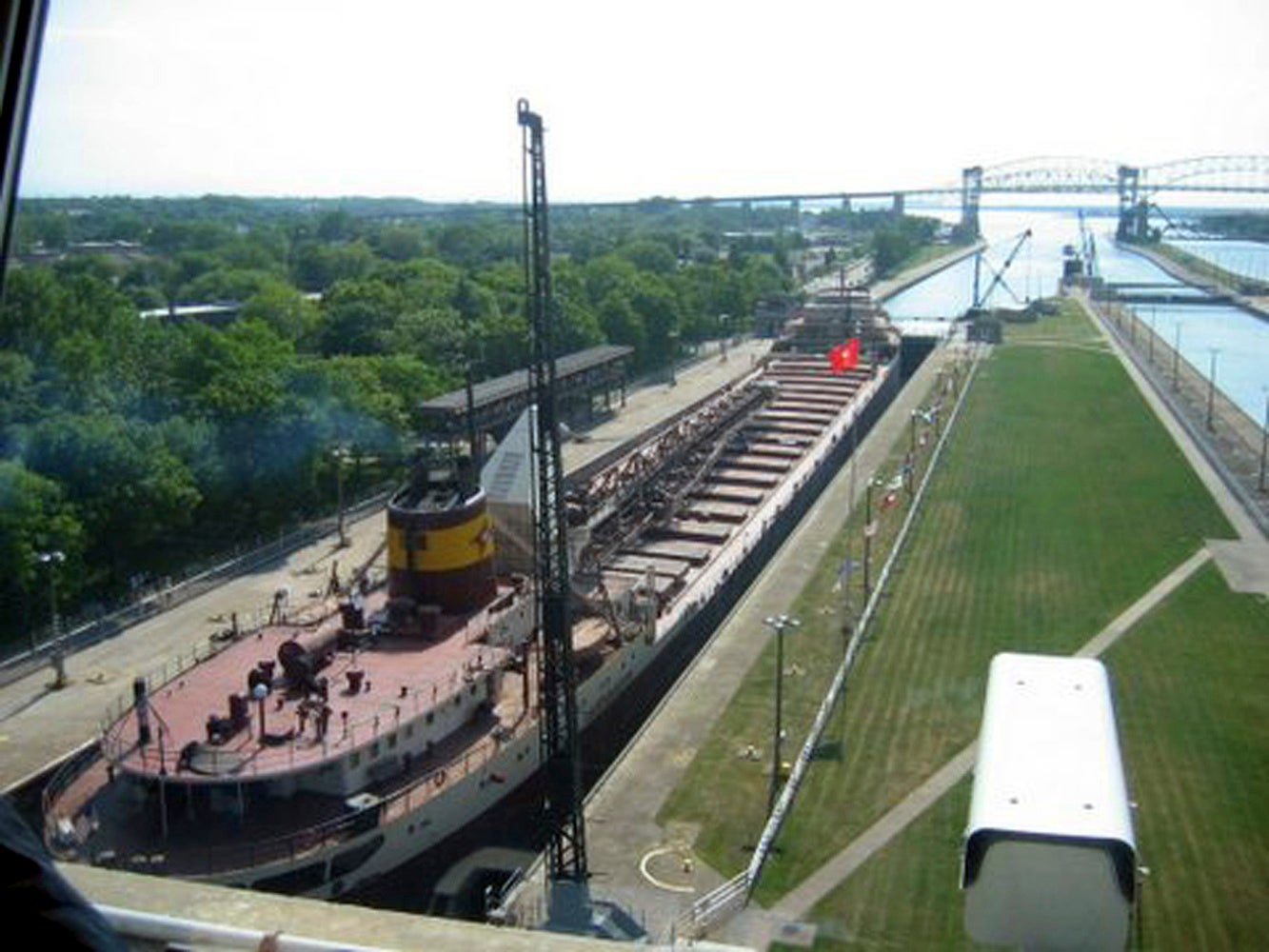Long-sought Great Lakes projects get funding under new law
The Biden administration's new infrastructure package will pump more funding into two high-profile Great Lakes projects

Your support helps us to tell the story
From reproductive rights to climate change to Big Tech, The Independent is on the ground when the story is developing. Whether it's investigating the financials of Elon Musk's pro-Trump PAC or producing our latest documentary, 'The A Word', which shines a light on the American women fighting for reproductive rights, we know how important it is to parse out the facts from the messaging.
At such a critical moment in US history, we need reporters on the ground. Your donation allows us to keep sending journalists to speak to both sides of the story.
The Independent is trusted by Americans across the entire political spectrum. And unlike many other quality news outlets, we choose not to lock Americans out of our reporting and analysis with paywalls. We believe quality journalism should be available to everyone, paid for by those who can afford it.
Your support makes all the difference.A project that will boost Great Lakes shipping in a crucial bottleneck and another intended to protect the lakes from invasive carp will get big funding increases under the Biden administration's infrastructure package, officials said Thursday.
The U.S. Army Corps of Engineers said it would pump $479 million into construction of a new navigational lock at Sault Ste. Marie, Michigan, expanding a complex that enables vessels to haul bulk cargo between Lake Superior and the other Great Lakes.
Additionally, the Corps will devote $226 million to the Brandon Road Lock and Dam near Joliet, Illinois where plans call for the installation of obstacles to prevent invasive carp from migrating up the Illinois River to Lake Michigan
The projects have been top priorities for members of Congress from the eight states that border the Great Lakes. The infrastructure measure, which also includes $1 billion to improve water quality, makes “the single largest investment ever in the Great Lakes,” Sens. Debbie Stabenow and Gary Peters of Michigan said in a statement.
About 7,000 vessels pass annually through the Soo Locks on the St. Marys River, which connects Lake Superior and Lake Huron and has a 21-foot elevation drop. Two locks are operational but only the Poe Lock can accommodate the biggest freighters, which are around 1,000 feet (305 meters) long.
The industry has long pushed for another, warning that if the Poe were disabled for long, it would disrupt the transport of commodities essential to Midwestern manufacturing.
Nearly all domestically made steel used in automobiles and appliances is produced from iron ore mined in Minnesota and Michigan's Upper Peninsula and shipped through the Poe Lock.
“The new lock at the Soo will provide much needed resiliency in the Great Lakes navigation system,” said Kevin McDaniels, deputy district engineer for the Corps' Detroit District. "It will eliminate the single point of failure in our nation’s iron ore supply chain.”
The new funding will be enough to finish building the $1.3 billion lock, Stabenow and Peters said.
“The critical role that Great Lakes waterways play in sustaining and advancing America’s economic vitality cannot be overstated,” said Rep. Marcy Kaptur, an Ohio Democrat and chairwoman of the House Energy and Water Subcommittee. “The revitalization of the Soo Locks will strengthen America’s commercial shipping capabilities and support good-paying jobs throughout the Industrial Heartland.”
The Brandon Road Lock and Dam funding will complete preconstruction, engineering and design work on upgrades to block the path of invasive carp, as well as initial construction. Electric barriers, bubble screens, noisemakers and other devices will be used.
Rivers and canals between the Mississippi and Lake Michigan are infested with carp imported from Asia in the 1960s to clear sewage lagoons and fish farms of algae and weeds. They escaped into the Mississippi River and have spread into its tributaries and are competing with native species for food.
Scientists say an invasion of the Great Lakes would threaten its $7 billion fishing industry.
The new funding “is an historic step forward for this critically needed project to add a chain of smart technologies to the waterway that will stop invasive carp from reaching Lake Michigan,” said Molly Flanagan, chief operating officer of the Alliance for the Great Lakes.
Subscribe to Independent Premium to bookmark this article
Want to bookmark your favourite articles and stories to read or reference later? Start your Independent Premium subscription today.